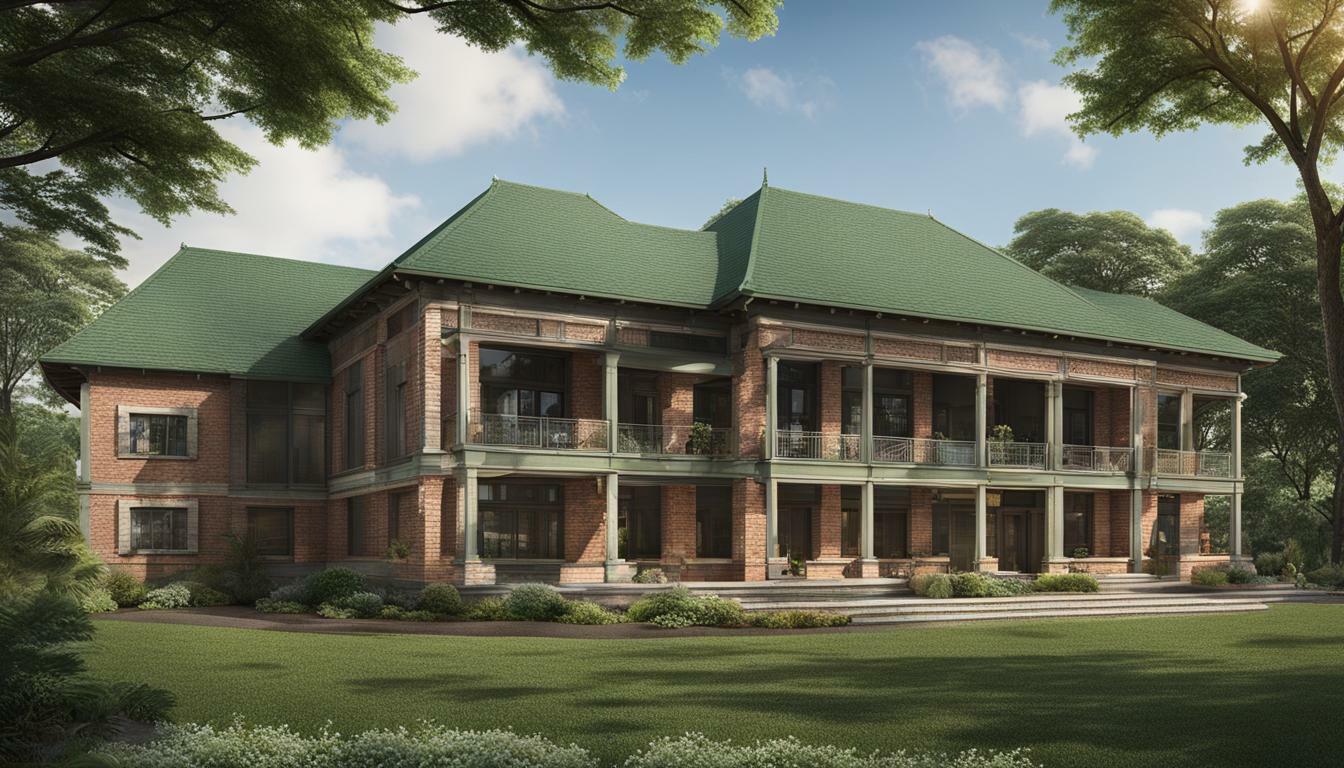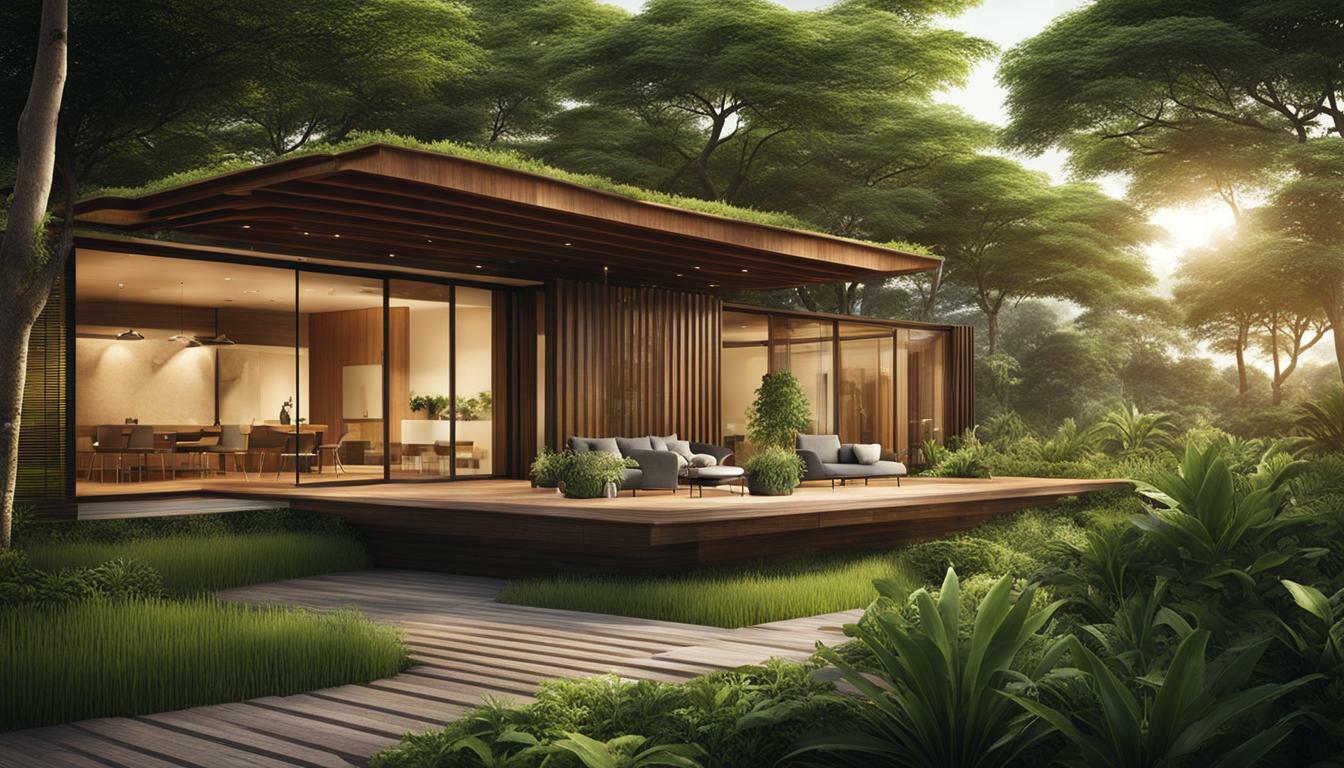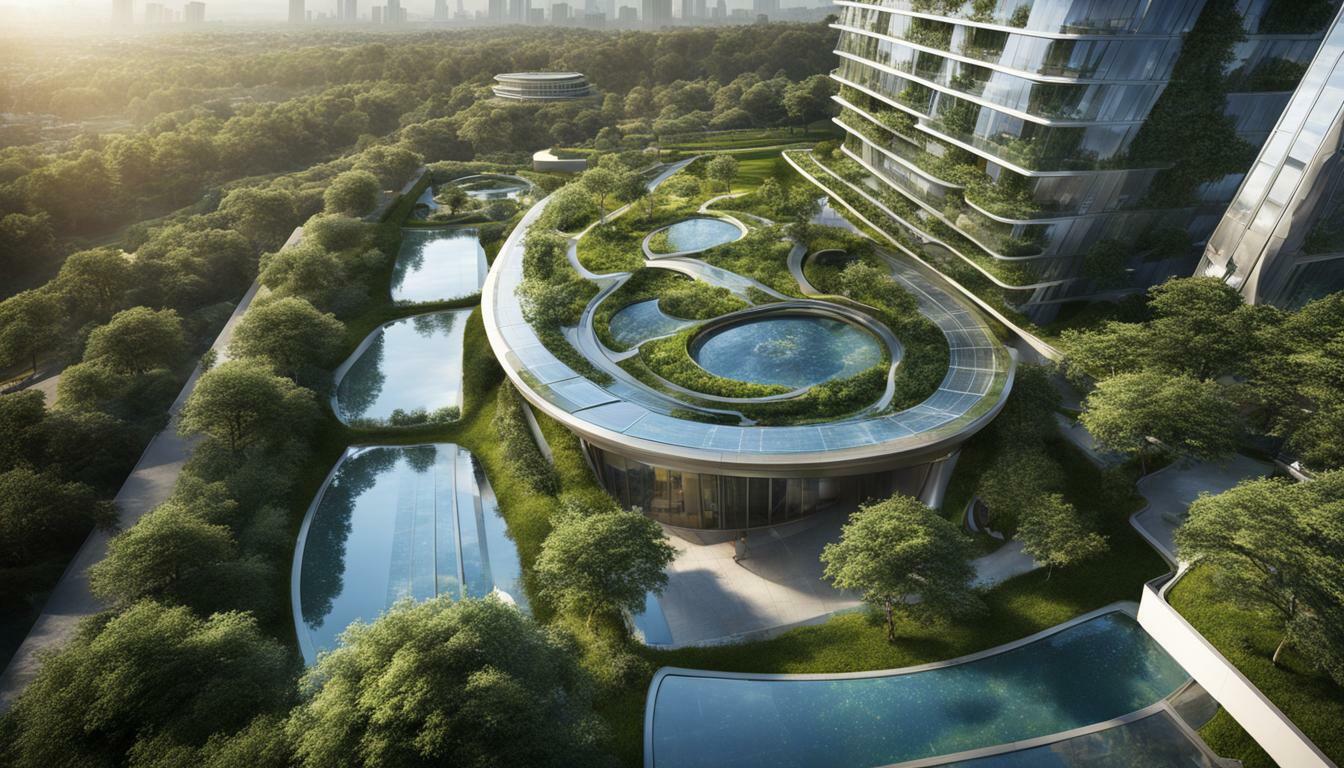Kuwait Green Building History
Kuwait has a rich history of green building, with sustainable construction practices dating back to the construction of the Oil Sector Complex in 1988. Designed by architect Arthur Erickson and completed in 2005, the complex marked a significant milestone in Kuwait’s journey towards sustainability.
Key Takeaways:
- Kuwait’s green building history can be traced back to the construction of the Oil Sector Complex in 1988.
- The complex was retrofitted with sustainable features by the Kuwait Institute for Scientific Research (KISR) in 2011.
- The National Committee of Building Codes in Kuwait (NCOBC) was established in 2015 to develop green building standards and codes.
- The iconic Kuwait Towers, designed by architect Malene Bjørn, were heavily damaged during the Iraqi occupation of Kuwait but were later restored.
- Kuwait is actively pursuing renewable energy and sustainable practices to reduce its carbon footprint.
Development of Green Building Standards in Kuwait
In order to promote eco-friendly architecture and environmental practices, the National Committee of Building Codes in Kuwait was established in 2015 to develop green building standards and codes. This initiative aims to create a regulatory framework that encourages sustainable development and construction practices throughout the country.
The committee has been working diligently to formulate regulations and a deployment plan for sustainable design. They have also been actively reviewing international and regional green building rating systems to ensure that Kuwait’s standards align with global best practices.
By implementing green building standards, Kuwait aims to reduce its environmental impact and contribute to the global efforts in combating climate change. These standards encompass various aspects of sustainable construction, including energy efficiency, water conservation, waste management, and indoor environmental quality.
Through the establishment of the National Committee of Building Codes, Kuwait is taking a proactive approach towards sustainable development. By integrating eco-friendly practices into its architectural and construction projects, the country is setting a positive example for other nations in the region and beyond.

The Kuwait Institute for Scientific Research (KISR) has been at the forefront of Kuwait’s green building initiatives, implementing sustainable construction practices in projects such as the Oil Sector Complex. KISR was awarded the green building certification project for the complex in 2011, which involved retrofitting the existing structure with various sustainable features.
One of the key elements of the project was the installation of solar films on the windows of the complex. These films help to reduce heat gain from the sun, leading to lower energy consumption for cooling the building. Energy-efficient fixtures were also installed to minimize electricity use, and water meters were implemented to monitor and manage water consumption.
In addition to these technical solutions, KISR also revised the smoking policies around the building entrances to discourage smoking. This change not only supports a healthier environment but also reduces the impact of cigarette butt waste on the surrounding area.

Through projects like the Oil Sector Complex, KISR has demonstrated its commitment to sustainable development and its role in transforming Kuwait’s built environment. By implementing green building practices, KISR is helping to reduce the environmental footprint of buildings and create a more sustainable future for Kuwait.
Kuwait’s Iconic Landmark – The Kuwait Towers
A symbol of Kuwait’s commitment to sustainable design, the Kuwait Towers stand as a testament to the country’s dedication to green building projects. Built as part of a water distribution project and designed by Danish architect Malene Bjørn, these towers have become an iconic landmark in Kuwait City.
The Kuwait Towers were inaugurated in 1979 and became a symbol of Kuwait’s growth and progress. Covered in enameled steel discs in shades of blue, green, and gray, they capture the attention of visitors and locals alike. However, their significance goes beyond their aesthetic appeal.
During the Iraqi occupation of Kuwait in 1990-1991, the Kuwait Towers suffered extensive damage. Nonetheless, they were later restored, showcasing the resilience and determination of the Kuwaiti people. This restoration process also highlighted the importance of sustainable design, with efforts made to incorporate eco-friendly features and technologies.
The restoration of the Kuwait Towers showcased Kuwait’s commitment to green building projects. By implementing sustainable practices, such as energy-efficient fixtures and water-saving measures, the towers serve as a reminder of the country’s dedication to sustainability and environmental consciousness.
“The Kuwait Towers are not just iconic structures; they are a reflection of our values and aspirations for a greener and more sustainable future,” said Ahmed Al-Wazzan, an architect and sustainability advocate in Kuwait.

| Feature | Description |
|---|---|
| Solar Panels | The Kuwait Towers are equipped with solar panels to harness the power of the sun and generate renewable energy. |
| Water Conservation | Efficient water fixtures and water-saving measures are implemented throughout the towers to ensure responsible water usage. |
| Energy-Efficient Lighting | LED lighting is utilized in the towers to reduce energy consumption and minimize environmental impact. |
Renewable Energy and Sustainability in Kuwait
Kuwait is actively embracing renewable energy sources and implementing sustainable practices to create a greener and more sustainable future. The country’s commitment to renewable energy is evident in its initiatives to adopt solar energy and reduce its carbon footprint. Kuwait has been investing in solar energy projects, aiming to generate a significant portion of its electricity from renewable sources.
One notable example is the Shagaya Renewable Energy Park, a pioneering project consisting of three renewable energy plants: a solar thermal power plant, a photovoltaic power plant, and a wind power plant. The park aims to diversify Kuwait’s energy mix and reduce its reliance on fossil fuels. With a total capacity of 2.1 gigawatts, it is expected to generate clean energy and contribute to the nation’s sustainable development goals.

In addition to solar energy, Kuwait is exploring other renewable energy sources such as wind power. The country is planning to build wind farms along its coastline, taking advantage of its favorable wind conditions. These wind farms will contribute to Kuwait’s renewable energy goals and help reduce greenhouse gas emissions.
Sustainable practices are also being implemented in various sectors across Kuwait. The government is promoting energy-efficient buildings and eco-friendly architecture, encouraging the use of sustainable materials and design techniques. Furthermore, efforts are being made to improve waste management and promote recycling, aiming to reduce environmental impact and preserve natural resources.
The Future of Renewable Energy in Kuwait
Kuwait’s commitment to renewable energy and sustainability reflects its vision for a more environmentally conscious future. The country’s investments in solar and wind energy, as well as its initiatives to promote sustainable practices, are significant steps towards reducing its carbon footprint and ensuring a greener tomorrow.
| Benefits of Renewable Energy in Kuwait |
|---|
| 1. Reduction of greenhouse gas emissions |
| 2. Diversification of the energy mix |
| 3. Decreased dependence on fossil fuels |
| 4. Creation of green jobs and economic opportunities |
Conclusion
The history of green building in Kuwait showcases the country’s commitment to sustainable development and its dedication to creating a more environmentally friendly future. Kuwait has made significant strides in incorporating sustainable practices into its construction industry, with key milestones and developments throughout the years.
One notable project that exemplifies Kuwait’s green building efforts is the Oil Sector Complex (OSC) constructed in 1988. Retrofitting this complex with sustainable features in 2011, such as solar films, energy-efficient fixtures, and water meters, demonstrated Kuwait’s commitment to enhancing the environmental performance of existing buildings.
In 2015, the establishment of the National Committee of Building Codes in Kuwait (NCOBC) further solidified the country’s commitment to sustainable design. The committee has been actively working on creating green building standards and codes, as well as reviewing international and regional green building rating systems. This initiative will contribute to the development of a more sustainable built environment in Kuwait.
Another iconic landmark that highlights Kuwait’s sustainable design practices is the Kuwait Towers. Built as part of a water distribution project, the towers were heavily damaged during the Iraqi occupation of Kuwait but were later restored. Their unique design, incorporating enameled steel discs in shades of blue, green, and gray, demonstrates Kuwait’s focus on aesthetics and environmental considerations.
Overall, Kuwait’s journey in green building and sustainable development showcases its dedication to improving the quality of the built environment while minimizing the impact on natural resources. By embracing renewable energy sources, developing green building standards, and implementing sustainable practices, Kuwait is paving the way for a greener and more sustainable future.
FAQ
What is the history of green building in Kuwait?
The history of green building in Kuwait can be traced back to the construction of the Oil Sector Complex in 1988. It was later retrofitted with sustainable features such as solar films, energy-efficient fixtures, and water meters. The National Committee of Building Codes in Kuwait was established in 2015 to further develop green building standards and codes.
What is the role of the Kuwait Institute for Scientific Research (KISR) in green building?
The Kuwait Institute for Scientific Research (KISR) played a significant role in promoting green building in Kuwait. They were awarded the green building certification project for the Oil Sector Complex in 2011, where they implemented sustainable features. This included the installation of solar films, energy-efficient fixtures, and water meters.
What are the Kuwait Towers and their significance in sustainable design?
The Kuwait Towers are a prominent landmark in Kuwait City. They were built as part of a water distribution project and were designed by architect Malene Bjørn. While not specifically built as green buildings, their restoration after being heavily damaged during the Iraqi occupation of Kuwait showcases the importance of sustainable design and preserving existing structures.
How has Kuwait been implementing renewable energy and sustainability?
Kuwait has been making efforts to adopt renewable energy sources and reduce its carbon footprint. The country has been investing in solar energy projects and exploring the potential of wind farms. Various sectors in Kuwait have also been implementing sustainable practices to contribute to a greener and more environmentally friendly landscape.
How are green building standards and regulations being developed in Kuwait?
Green building standards and regulations in Kuwait are being developed by the National Committee of Building Codes. Established in 2015, the committee is working on creating sustainable design regulations and a deployment plan. They are also reviewing international and regional green building rating systems to ensure the implementation of effective and appropriate standards in Kuwait.








